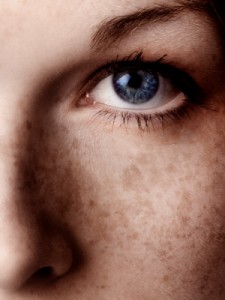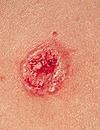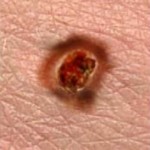The Most Prominent Form Of Skin Cancer Today
Skin Cancer is now the most frequently diagnosed form of cancer in the United States. Today, approximately 10,000 Americans succumb to Melanoma – which is also now the deadliest form of cancer each year. It is estimated that in the past three decades, skin cancer has affected more Americans than all other forms of cancers combined. Skin Cancer can befall anyone, regardless of the amount of time spent in the sun, or of one’s ethnicity, or age. The good news is that skin cancer is certainly one of the most curable cancers when early detection occurs.
The survival rate when Melanoma is detected before spreading to lymph nodes is about 98%. However, the survival rate decreases to 63% after it has spread to the lymph nodes – and falls to 16% if it reaches distant organs in the body. Early detection is crucial to having the best treatment and outcome of skin cancer to ensure the highest survival rate possible.
Skin cancer is the most noticeable cancer, because each day we simply look in the mirror and we immediatly see our skin. You are always the first line of defense against skin cancer. Thus, it is imperative to regularly check your skin with a self-exam. It has been shown that up to 57% of patients with melanoma had diagnosed themselves through self-exams (a second study has shown that spouses find up to 12% of melanomas).
Skin Care Prevention
You’re probably making a mistake with your SPF. “Too many people think that a sunscreen is just to protect them from a sunburn,” says Brooke Jackson, MD, associate professor of dermatology at the University of North Carolina at Chapel Hill. “They wear it at the beach but not every day.” The reality is that all year round your skin is vulnerable as UV rays do penetrate through glass. The everyday proof of this is in the fact that 74% of all early melanomas appear on the left side of the body (when driving this is the side exposed to the sun). Proper preventative care from sun exposure is to apply an SPF 30 broad-spectrum sunscreen daily.
Risk Factors for Skin Cancer
“Melanoma doesn’t discriminate by skin color,” says Shelby Moneer, director of education at the Melanoma Reseach Foundation. In black skin, melanin provides a sun-protection factor of about 13.4 (compared with the 3.4 in which skin)- still less than the SPF 15 required for adequate sun protection. Though people of color have a lower overall incidence of skin cancer, their five-year survival rate is only 75%, versus 93% for Caucasians. “Many people, including some doctors, think that if a person doesn’t have fair skin, skin cancer won’t happen to them,” says Brooke Jackson, MD, associate professor of dermatology at the University of North Carolina at Chapel Hill. “Because of this misconception, if a malignancy is found it’s often at a later, more serious stage.”
“If you have a first-degree relative – a parent, sibling or child – who has had melanoma, your chances of getting it are 50% higher,” says Jennifer Linder, MD, a dermatologist in Scottsdale, Arizona, and spokesperson for the Skin Cancer Foundation. Though experts recommend that the general population get a yearly exam with a dermatologist, adults with a family history of skin cancer should be checked every six months.
More than 419,000 cases of skin cancer in the U.S. each year are linked to indoor tanning. If you have used tanning beds in the past, experts advise that you tell your dermatologist to include that information in your skin cancer history.
If you have a lot of moles the more you have, the greater your risk of skin cancer. About half of all melanomas develop in pre-existing moles. “There are two types of moles: little sun spots, evenly colored and nicely shaped, and what we call atypical moles.” Dr. Linder says. Folks who have 10 or more atypical moles, also known as dysplastic nevi, have 12 times the risk of getting melanoma as the general population.
People with lighter skin, light eyes, and light hair have less of the protective pigment called melanin in their skin and therefore are more susceptible to sunburns – and far more apt to have moles. A recent study of 47 fair-skinned children under age 10 found that those with a gene variant for blue eyes were more likely to develop moles – and those with a gene variant for both blue eyes and red hair were more likely to develop larger moles after sunburns.
“Your risk of melanoma doubles if you have even had just one blistering sunburn,” Fox says. But here’s the key: It’s never too late to start incorporating sun-safe practices, like wearing a good sunscreen regularly. “It’s the cumulative amount of sun over your life that causes skin cancer,” she explains. Contrary to popular belief, only about 23% of lifetime sun exposure is acquired by age 18. “Changing habits does make a difference,” Fox says.
What To Look Out For
Actinic Keratosis:
These pre-cancerous lesions typically form on the most sun-exposed areas like the face, lips, and hands. Rough and wart-like, they’re small and develop slowly – many people only notice them by touch, rather than by sight.
What’s the Risk?
Up to 10% of actinic keratoses turn into squamous cell carcinoma if left untreated. A derm can freeze them off; other treatment options include chemical peels and topical chemotherapy (creams and gels applied for several weeks to destroy cancerous or precancerous cells).
Dysplastic Nevus:
These benign growths can look very similar to melanoma -they’re larger than 6 millimeters across, with irregular borders and varying shades of color
What’s the Risk?
While these moles are noncancerous (and fairly rare), it’s essential to have them checked by a dermatologist since they’re hard to distinguish from melanoma. If you have any, be even more vigilant about sun protections: Research suggests that people with dysplastic nevi are at greater risk of developing melanoma.
Basal Cell Carcinoma:
There are several forms, including some that are shiny, pink and molelike and others that form open sores. They usually occur on parts of the body exposed to the sun: faces, ears, scalp, shoulders, back of the neck, hands arms, and legs.
What’s the Risk?
With nearly 3 million cases diagnosed in the U.S. each year, it’s the most common form of skin cancer. Luckily, it rarely becomes life-threatening. But don’t ignore it- if not treated promptly, it can grow into nearby bones and tissue and cause disfiguration.
Squamous Cell Carcinoma:
Thick, rough, scaly patches that can crust or bleed, or open sores. The skin around the cancer often serves as a warning, with wrinkles, pigment changes, and freckles signaling sun damage in he area. Like the actinic keratosis lesions that often precede it, squamous cell carcinoma grows in areas that get lots of sun.
What’s the Risk?
It’s the second most common type of skin cancer (around 700,000 new cases annually). About 1.5% of U.S. patients die from the disease.
Melanoma:
It typically looks like a birthmark or raised mole; keep the “ABCDE” signs in mind. Aggressive and fast-growing, it’s the deadliest form of skin cancer
What’s the Risk?
Anyone can develop melanoma, which occurs when UV-damaged skin pigment cells multiply rapidly to form malignant, molelike tumors. Unlike other types of skin cancer, it can form with just occasional -but intense- exposure to the sun. When caught and treated early, it’s largely curable.
To Learn More Please visit Our References: the Skin Cancer Foundation












